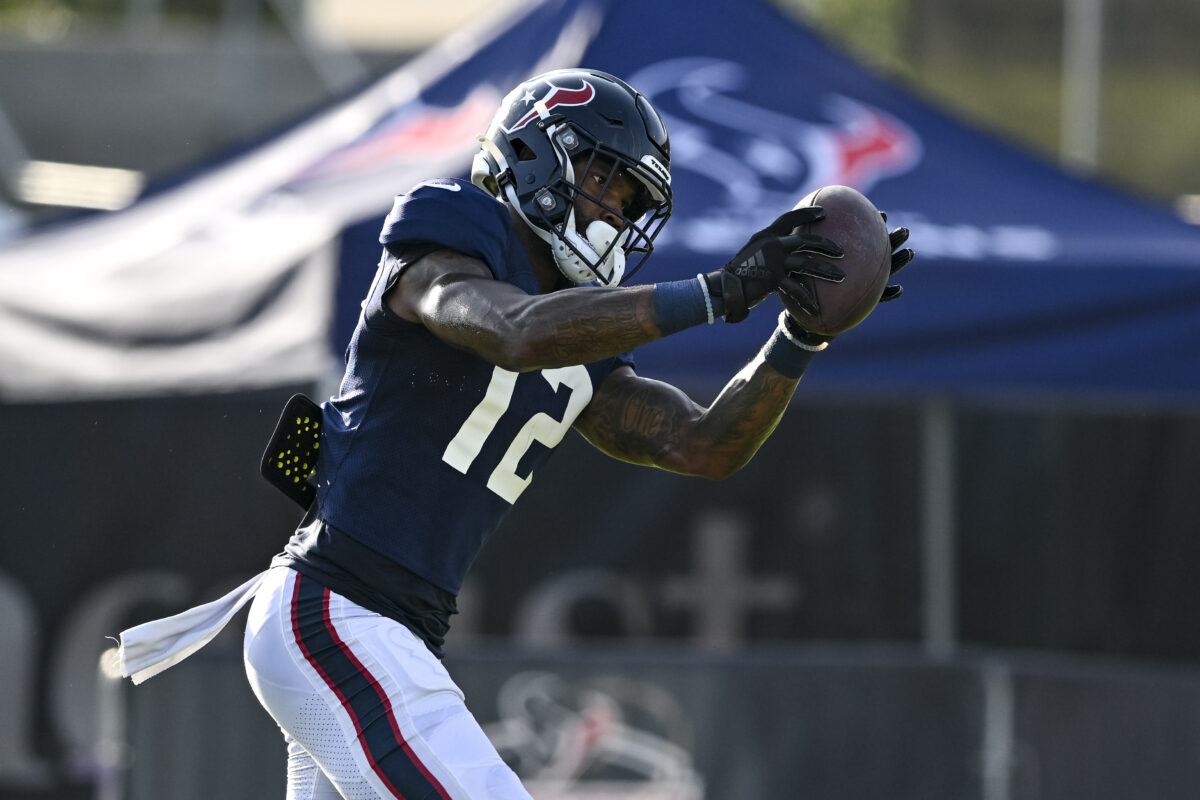What should fantasy owners expect from the Houston receiving corps?
There were times last season that the Houston Texans scarcely resembled a professional football team, lowlighted by an eight-game losing streak during which they were outscored 237-91 (that’s a whopping 11.4 points per game). Then-rookie quarterback Davis Mills took his lumps filling in for an injured Tyrod Taylor, now on the New York Giants, but those hard lessons may have paid off as Mills played fairly well over the final five weeks and will enter 2022 as the starter.
While it’s too early to call the passing game rejuvenated, it at least has the potential to generate some respectable fantasy football producers, particularly if Mills continues to show improvement. With that in mind, let’s look at the top of Houston’s wide receiver depth chart.
Brandin Cooks
Wherever he goes and from whomever he catches balls, Cooks delivers. To that end, the well-traveled wideout posted a 90-1,037-6 line serving as the primary target for Mills and Taylor. It was the sixth 1,000-yard effort in eight NFL seasons, and his second in a row since joining the Texans. There was some belief that Houston would trade Cooks as part of their rebuild, but the team handed him a lucrative, two-year extension instead with the expectation he’d be their No. 1 receiver.
[lawrence-related id=466104]
Improvement from Mills and better talent around him should prevent defenses from focusing too much of their attention on Cooks, who at 29 should still be in his prime. He may not be the flashiest receiver, and it’s easy to forget he’s out there when he’s languishing in Houston, but it’s hard to find fault in Cooks’ long-term durability and consistency.
John Metchie III
Had he not torn his ACL during the SEC Championship Game in December, Metchie likely would’ve been drafted in the first round. Instead, he fell to the Texans with the 44th overall selection. While the injury is the big news, let’s start with the scouting report. At 5-foot-11, 187 pounds, Metchie isn’t a big target, nor is he someone who is going to take the top off coverage. The Alabama product is more a possession receiver with refined route-running skills, good hands, and some elusiveness after the catch.
The rookie will likely slide into the No. 2 role whenever he’s healthy, but just six months clear of his injury it’s too early to nail down when that’ll be. For his part, Metchie has stated he’ll be ready to practice in July when training camp opens, but the team hasn’t put a timetable on it. Given the status of the Texans as a non-contender it’d be surprising (and short-sighted) to rush Metchie back on the field. As such, his rehab could certainly linger into the regular season.
Nico Collins
A third-round pick in last year’s draft, Collins (33-446-1) finished second on the club in receptions, receiving yards, and yards per catch (13.5) as a rookie. Compared to Cooks and Metchie, Collins (6-foot-4, 215 pounds) is a giant, and he has enough speed to get deep down the field.
While his physical credentials are impressive, Collins still has work to do with consistently catching the ball. His youth and upside should give him a clear advantage over retreads like Chris Conley and Phillip Dorsett to serve as one of the top-three wideouts for Houston this year.
Fantasy football outlook
If you’re looking for a steady producer to plug into your lineup as a low-end WR2 or really strong WR3, Cooks is your man. He’s never had a true monster season, but he’s finished with between 1,025 and 1,225 yards in six of his last seven years.
Metchie will be a desirable get in dynasty formats, but those in single-year leagues should view him as a late-round curiosity with modest upside.
Collins is interesting based on how different his body type is, which could make him a popular red-zone target, but he probably tops out as watch-list fodder.


